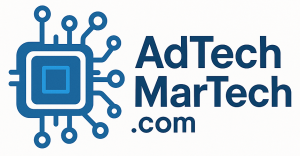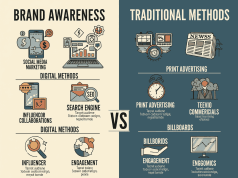In today’s digital age, small businesses must harness the power of online advertising to compete and thrive. With the right ad platforms, even the smallest enterprises can reach their target audiences, build brand awareness, and drive sales. Here’s a look at some of the most effective ad platforms available to small businesses.
1. Google Ads
Overview
Google Ads is a powerhouse when it comes to online advertising. It allows businesses to display ads on Google’s search results and its extensive partner network.
Advantages
- Targeted Reach: Advertisers can use keywords to target specific queries, ensuring their ads are displayed to interested users.
- Performance Tracking: Google Ads provides detailed metrics, allowing businesses to tweak campaigns for better results.
- Flexible Budgeting: Small businesses can set daily budgets to control costs effectively.
Best Practices
- Focus on long-tail keywords that have less competition.
- Utilize ad extensions to provide more information and improve click-through rates.
2. Facebook Ads
Overview
With over 2.8 billion monthly active users, Facebook Ads offers an unparalleled opportunity for small businesses to reach potential customers.
Advantages
- Granular Targeting: Businesses can target users based on demographics, interests, and behaviors.
- Engaging Formats: Options include images, videos, carousels, and stories, allowing brands to tell compelling stories.
- Community Building: Ads can be used to engage with users, promoting discussions and building brand loyalty.
Best Practices
- Use eye-catching visuals and concise messaging.
- Test different ad formats to see what resonates best with your audience.
3. Instagram Ads
Overview
Instagram, owned by Facebook, is a visual-centric platform ideal for brands looking to showcase their products.
Advantages
- Visual Appeal: Great for brands with strong visual content, resulting in higher engagement rates.
- Influencer Marketing: Many small businesses leverage influencers to reach larger audiences authentically.
- Seamless Shopping: Instagram ads can include shopping tags, allowing users to purchase directly from the app.
Best Practices
- Focus on aesthetics and storytelling through high-quality images and videos.
- Utilize user-generated content to build community trust.
4. LinkedIn Ads
Overview
For B2B small businesses, LinkedIn is the go-to platform for professional networking and advertising.
Advantages
- Professional Targeting: Target ads based on job title, industry, or company size.
- Lead Generation: LinkedIn’s Lead Gen Forms make it easy to collect potential customer information.
- Thought Leadership: Sponsored content can position a business as an authority in its field.
Best Practices
- Share insightful and relevant content that addresses industry pain points.
- Use professional visuals and clear calls to action.
5. Pinterest Ads
Overview
Pinterest is a unique platform where users actively seek inspiration for products and services.
Advantages
- Purchase Intent: Users are in a browsing mindset and are often planning future purchases.
- Longevity of Pins: Content can continue to perform long after it’s published, unlike typical social media posts.
- Visual Discovery: High-quality images can drive significant engagement and click-through.
Best Practices
- Use vertical images to maximize screen space.
- Incorporate keywords into pin descriptions for better visibility.
6. TikTok Ads
Overview
The rise of TikTok has created new opportunities for small businesses to reach younger audiences in a fun and engaging way.
Advantages
- Viral Potential: Creative, entertaining content can quickly become popular, leading to massive reach.
- Diverse Ad Formats: Including in-feed ads, branded hashtags, and challenges.
- Authenticity: Users value authentic, relatable content over polished advertisements.
Best Practices
- Embrace trends and challenges to create relatable content.
- Keep videos short and engaging to capture viewer interest quickly.
Conclusion
For small businesses, effective advertising can be the key to unlocking growth and success. By leveraging platforms like Google Ads, Facebook, Instagram, LinkedIn, Pinterest, and TikTok, they can craft targeted, engaging campaigns that resonate with their audiences. The goal is to find the right mix of platforms that suit their brand, budget, and objectives.
In a competitive landscape, small businesses have the potential to thrive through smart advertising strategies. By understanding each platform’s unique advantages and implementing best practices, they can unleash their full potential in the digital marketplace.









